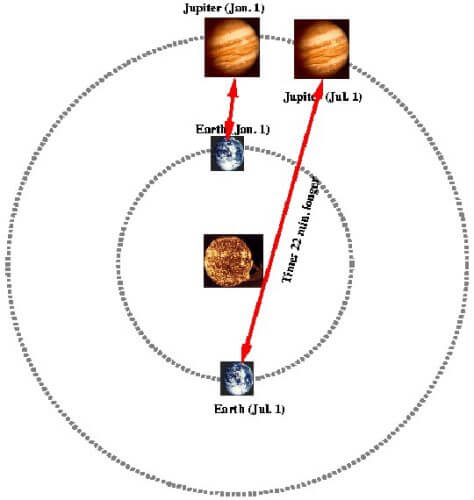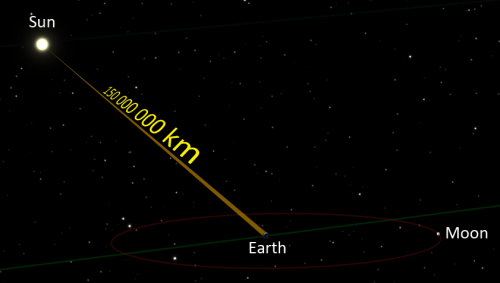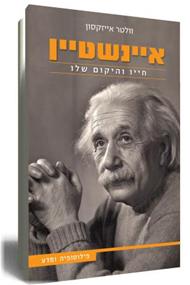It was the Danish astronomer, Ole Remer, who, in 1676, managed to measure the speed of light. His method was based on observations of the eclipses of the moon Io of Jupiter, which he carried out in order to prove his claim that the speed of light is finite

Although Galileo was the first person to attempt to determine the speed of light, he was unsuccessful. His experiments took place over distances on land - that is, a distance too small to measure such a great speed. The timing methods at his disposal were also too distant and crude to allow for an accurate measurement of the speed of light.
Today we know that the speed of light is close to 300 thousand kilometers per second (more precisely the speed of light in space is 299,792,458 meters per second - a figure used as a basis for calculating distances in space in light years). Galileo had trouble distinguishing this speed from infinite speed due to the small scale he was using.
The only way to measure distances greater than a few light-second particles is to look at the sky. It was the Danish astronomer, Ole Remer, who, in 1676, managed to measure the speed of light. His method was based on observations of the eclipses of the moon Io of Jupiter, which he carried out in order to prove his claim that the speed of light is finite, which was against the scientific assumption until then.
Remer noted that the observed time interval between successive eclipses of Io was about seven minutes longer when the Earth was moving away from Jupiter than the interval between those eclipses as seen when the Earth was approaching Jupiter. Remer claimed that as the Earth recedes, the time difference between the eclipses was about 3.5 minutes greater than the true value, due to the additional distance that the light from each eclipse had to travel to reach the Earth. On the other hand, when the Earth moves towards Jupiter, the observed interval between the eclipses is smaller (about 3.5 minutes) because the distance the light has to travel has decreased.
If the Earth had remained in place, the light from the eclipses would have dimmed the same distance to the Earth so that the true distance between the eclipses would be constant. However, as Earth moved away from Jupiter, light had to travel a greater distance to reach Earth. Since the speed of the Earth's orbit around the Sun was already known then, it was possible to calculate the distance to Jupiter. The speed of light explained the changes in the intervals between the eclipses which reached about seven minutes.

In 1671, Remer made the observations of Jupiter from the Orniborg Observatory on the Swedish island of Van, near Copenhagen. Over the course of several months, Jean Picard and Remer observed nearly 140 eclipses of Io versus Jupiter, while Giovanni Cassini (discoverer of Saturn's rings) observed the same eclipses from Paris. By comparing the times of the eclipses, the difference between the longitude of Paris and that of Orniburg was calculated.
It was Cassini who wrote in 1675: "Apparently the deviation was caused by the light taking some time to reach us from the moon (Io); It seems that light takes between ten and eleven minutes to travel a distance equal to half the diameter of the Earth's orbit." Two years later, Remer presented his findings to the French Academy of Sciences.
The estimate that came up from Remer's observations for the speed of light was about 225 thousand kilometers per second, which was pretty good considering the method. The calculation itself was made by another famous astronomer - Christian Huygens. The first almost exact calculation was made by the astronomer Jean-Baptiste Joseph Delembert in 1809 when he showed that the time it takes for light to reach the Earth from the sun is eight minutes and 12 seconds, which means that the speed of light is slightly more than 300 per second.

The speed of light and Einstein's principle of relativity
Logically, one would expect the ultimate speed limit in the universe to be infinity, since it is also defined as the largest imaginable number. However, in our universe, the relatively modest speed of 300,000 kilometers per second, the speed of light, is the maximum theoretical speed, and in practice no one can compete with the light beam. This was the insight that Albert Einstein received at the age of 16 in the last years of the 19th century.
In 1868, the Scottish mathematician and physicist James Clark Maxwell calculated based on the works of Ampere, Coulomb and Farday that all electromagnetic waves travel at the same speed as light in empty space and that light itself is a type of wave that oscillates across invisible magnetic and electric fields. Maxwell came to the conclusion that light and other electromagnetic waves should move at a constant speed in a medium that he called "ether".
Michelson-Morley's famous experiment in 1887, in a failed attempt to prove that light travels through the medium known as ether, surprisingly revealed that light travels at the same speed regardless of whether it was measured in the direction of the Earth's movement or at right angles to it, at least when light travels through a void. When light passes from medium to medium (like from the glass air, for example), its speed can change depending on the properties of the new medium. The curvature of light results from the action of lenses.
Therefore, if the light source is moving towards us or away from us, the light is still moving at a steady speed of 300 kilometers per second, contrary to classical physics and common sense. In 1905, the young Einstein explained why the speed of light is constant and does not depend on the speed of its source or its observer. Einstein (and also the French mathematician Henri Poincaré, who reached similar conclusions at about the same time, albeit from a mathematical point of view) realized that the whole idea of the ether as a medium in which light moves was completely unnecessary and therefore it was necessary to abandon the idea of absolute time.

Einstein also understood that Maxwell's equations led to a paradox or an apparent incompatibility of the laws of physics, because it follows from them that if it were possible to stick to a beam of light, the observer would see a stationary electromagnetic wave, which is impossible. Einstein therefore hypothesized that the speed of light actually plays the role of the infinite speed in our universe, and that in fact nothing can move faster than the speed of light and therefore nothing in the universe can move at an infinite speed either. It should be noted that Einstein did not really prove the stability of the speed of light but used this figure as an axiom (premise) from which he derived the rest of his theory. The axiom is experimentally verifiable, but not proven in any theoretical sense.
The constant speed of light was one of the two pillars of his special theory of relativity. The second pillar was the "principle of relativity" (or the "principle of invariance"), an idea first stated by the Italian physicist Galileo Galilei in 1632. Galileo claimed that the laws of physics are the same for every acceleration and for every observer (constant speed in a straight line), and therefore, only by Observing the results of mechanical experiments, it is not possible to distinguish between a state of rest and a state of constant speed.
Galileo used the example of a ship sailing at a constant speed, without rocking, in a smooth sea, and he noted that any observer doing experiments in a dark room would not be able to tell if the ship was moving or stationary.
This insight of Galileo is combined with Einstein's principle of relativity with the constant speed of light, it became clear to Einstein that the speed of light will be the same regardless of the speed of the observer or the source of the light and that from any location the measurement will show 300 thousand kilometers per second.
For the article on the Universe Today website
For the article on the physics of the universe website
More of the topic in Hayadan:
- Can anything move faster than light?
- An experiment confirms the speed of light as a constant factor in relativity
- Confirmation of Einstein's theory - the speed of light and the speed of gravity are equal
- Quantum philosophy Is it possible to communicate at infinite speed using the Einstein-Podolsky-Rosen experiment?

10 תגובות
Ben Or
What is the purpose of your questions? They all have answers.
Experiments to measure the speed of light are carried out every day. Many times every day.
The distance to Jupiter is known from Kepler's third law.
No - a simple person cannot measure the speed of light alone. But every device of yours, every GPS device and many simple measuring tools rely on the speed of light.
How did you measure the speed of light in a vacuum, which is 299,792,458 meters per second?
How did they know there was a vacuum in space?
What are the axioms they relied on?
Is there a step-by-step description of the experiment exactly!
Was this experiment repeated a second and a third time?
Can I as a simple person measure the speed of light myself?
How did they know the distance to justice??
Clarification to my previous message:
What is important is that in position A, the Earth is between Jupiter and the Sun.
In position B, the Earth is on the other side. The sun is in the middle. In this situation it is very difficult to see Jupiter and the eclipse. But, even if it was possible to see it, don't forget that the angle of view on justice has changed. Jupiter moves in the sky. We see him from the side. The eclipse is already in a different timing. All this must be taken into account when preparing the table in question. Still, with patient and accurate work it will be possible to prepare the table I spoke about.
Why the difference of only 7 minutes and not 16 minutes? Because the angle of vision has also changed in the meantime and it also has an effect. (In addition, the measurement may have been performed 3 months later and not 6). Because of the difficulty in observation.
The error in Remer's calculations (wrong by 30%) was due to the fact that he did not know everything that is known today.
Below is a clear explanation of the phenomenon:
Suppose that at time point A, the Earth is close to Jupiter. We see the eclipse of the moon Io (it disappears behind Jupiter). It is known that this moon orbits Jupiter every 42 hours (Wikipedia).
For the sake of simplicity, let's assume that Jupiter is fixed in its place, and the Earth orbits the Sun.
Therefore, I know that six months later, the Earth will be on the other side of its orbit. 180 days have passed, times 24 hours. That means that Shayo went through 102 eclipses during this time. which are 102*42 hours that pass between eclipses. That is, we are able to calculate an annual table of eclipses of the moon Io. For example: on January 1 at 00:00:00, on January 2 at 18:00:00 and so on. (It's not difficult. You count how many eclipses Io did over the course of a year, and calculate average times).
This is what Ole Remer did. He made a table.
Then he discovered that there are time differences. There are exceptions to the table. Sometimes positive sometimes negative. Deviation average: 0.
Then he realized that light has a finite speed. Therefore, when we are close to Jupiter we see the eclipse after an unknown time T. And when we are far from Jupiter, we see the eclipse after time T+7 minutes. The extra 7 minutes is the time it takes for light to cross the Earth's orbit.
Hey, wait, weren't we wrong? It is known that the light reaches us from the sun 8 minutes later. I mean, it takes 16 minutes to cross the track, what's wrong here? Why only 7 minutes difference?
The answer to this is in the opening of my words "Suppose the planet Jupiter is fixed in its place..."
My words are not suitable to write in the article. Ra'anan also claimed that there was an error in the article, but he was also wrong in his words. The difference is not due to Jupiter-Earth relative speeds (the theory of relativity does not allow this) but to relative positions. The drawing is indeed correct.
Sorry Raanan, but the attached drawing is consistent with the conclusions that light has a finite speed. The Earth approaching Jupiter saves due to the progress of about 300 million km in half a year, therefore the cycles of Io seem to advance when the Earth approaches Jupiter and lengthen when the Earth moves away from Jupiter. From this we can deduce the speed of light. The size of the astronomical unit was not to be measured, hence the error in his calculation.
Some Comments.
1. Its original purpose was to provide a schedule for the appearances of the moon in order to allow longitude to be fixed in navigation in the middle of the sea.
2. The drawing and explanation are wrong. Differences in the measurements of the lap time of In Shaseh were due to the relative speed between the Earth and Jupiter. Not in the distance differences. A distance difference as you mentioned will not allow measurement of cycle time differences because the relative speed in both cases is 0.
I edited again. Thanks
Lots of spelling mistakes and syntax errors make it difficult for the reader
Unfortunately, it appears that the translation is a machine translation. For example the following quote: "Galileo claimed that the mechanical laws of physics are the same for every acceleration of an observer (constant speed in a straight line)," end of quote.
Another quote: "Galileo used the example of a ship traveling at a constant speed, without rocking, in a smooth sea." End quote.
But other than that the article is interesting.